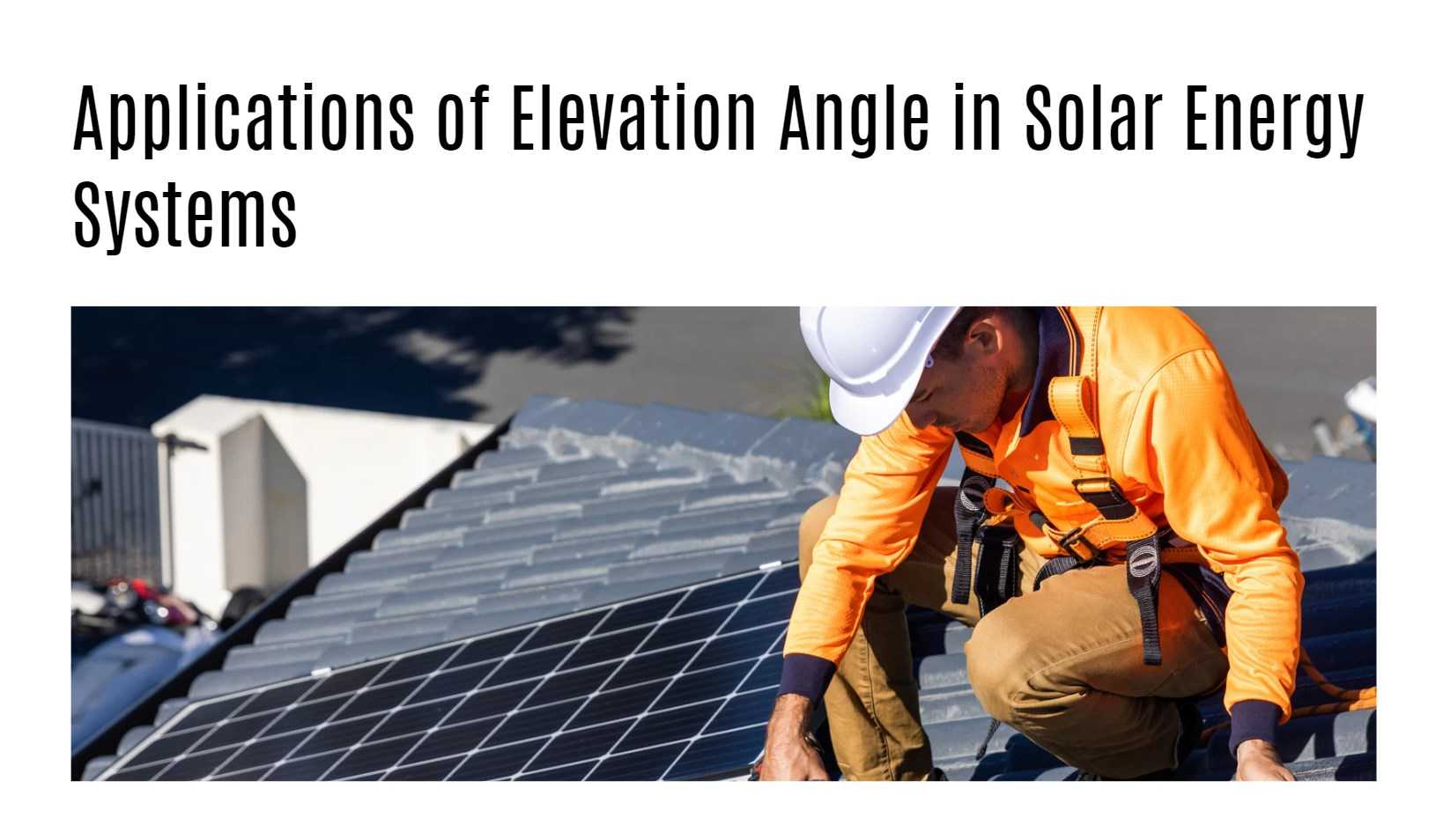Harnessing solar energy effectively is critical in our pursuit of sustainable and renewable energy solutions. One essential factor in optimizing solar power systems is the elevation angle. This article delves into the importance of the elevation angle in solar energy, its fundamental principles, the factors affecting it, and its various applications. By comprehensively understanding the elevation angle, we can maximize the efficiency of solar energy systems and significantly enhance their performance.
What is Solar Energy?
Solar energy, a cornerstone of renewable energy sources, is derived from the sun’s rays. It is an abundant, clean, and sustainable resource that plays a pivotal role in reducing our dependency on fossil fuels. Solar energy systems capture sunlight and convert it into electricity through photovoltaic (PV) cells. These systems can be installed on rooftops for residential use or deployed as large-scale solar farms for commercial and industrial applications. By leveraging solar energy, we can mitigate environmental impact and contribute to a greener future.
Importance of Understanding the Elevation Angle
The elevation angle, also known as the tilt angle, is the angle between the solar panel and the horizontal plane. It is crucial for optimizing the capture of sunlight, as it influences the amount of solar radiation received by the panels. Proper adjustment of the elevation angle ensures that solar panels receive maximum sunlight exposure throughout the day, thereby enhancing electricity production.
Key Points:
- Maximizes Sunlight Capture: Correctly setting the elevation angle allows solar panels to absorb the maximum amount of sunlight.
- Enhances Efficiency: Optimal tilt improves the overall efficiency of the solar power system.
- Facilitates Strategic Planning: Understanding the elevation angle aids in the precise design and positioning of solar projects.
Basics of the Elevation Angle
Definition and Calculation
The elevation angle is determined based on the geographical location, time of year, and specific energy needs. A general rule of thumb is to set the elevation angle equal to the latitude of the location to maximize annual energy production. However, adjustments may be necessary depending on seasonal variations.
Seasonal Adjustments
- Winter: The sun is lower in the sky; hence, a higher elevation angle is recommended.
- Summer: The sun is higher; thus, a lower elevation angle is preferable.
Factors Affecting the Elevation Angle
Several factors influence the ideal elevation angle for solar panels:
Geographic Location
The optimal elevation angle varies significantly with latitude. Locations closer to the equator experience higher solar angles, while regions further from the equator require different tilts to maximize sunlight capture.
Seasonal Variations
Seasonal changes necessitate adjustments in the elevation angle to ensure optimal performance throughout the year. Different angles are required to capture the varying path of the sun across the sky during different seasons.
Weather Conditions
Local weather patterns, such as cloud cover and atmospheric conditions, impact the effectiveness of the elevation angle. Cloudier regions might benefit from slightly adjusted angles compared to sunnier areas.
Applications of Elevation Angle in Solar Energy Systems
Residential and Commercial Solar Panels
For both residential and commercial solar panel installations, the elevation angle is vital in maximizing energy output. By adjusting the tilt according to geographic location and seasonal changes, solar panels can generate more electricity efficiently.
Concentrated Solar Power Systems
In concentrated solar power (CSP) systems, tracking mirrors reflect sunlight onto a central receiver. The elevation angle plays a crucial role in positioning these mirrors accurately to ensure maximum sunlight exposure, thereby enhancing energy production.
Off-Grid Applications
Off-grid solar applications, such as solar water heaters and small-scale PV systems, also benefit from the correct elevation angle. Proper orientation based on the elevation angle ensures efficient sunlight harnessing, leading to significant energy generation and cost savings.

Maximizing Solar Energy Efficiency with the Right Elevation Angle
Optimizing the elevation angle is paramount for achieving peak performance in solar energy systems. By understanding and implementing the correct tilt, we can significantly enhance energy capture and system efficiency.
Key Strategies:
- Regular Adjustments: Regularly adjusting the elevation angle according to seasonal changes ensures continuous optimal performance.
- Precision in Design: Accurate calculations and design considerations based on location and environmental factors contribute to higher efficiency.
- Utilizing Technology: Advanced tracking systems can dynamically adjust the elevation angle, further optimizing energy capture.
Conclusion
Understanding the elevation angle is fundamental in maximizing the efficiency of solar energy systems. By grasping its basics, considering influencing factors, and applying this knowledge, we can optimize solar energy capture and enhance overall system performance. Proper adjustment and strategic implementation of the elevation angle contribute significantly to our goal of sustainable energy and a greener future. Let us continue to explore innovative ways to leverage solar energy effectively, reducing our environmental impact and fostering a sustainable world.
Related Posts
- What Kind of Inverter Does My Solar Panel System Need?
- Using Solar Panels without Batteries: A Practical Guide
- Understanding How Solar Lights Function at Night: A Guide for Energy Professionals
- Understanding BMS and its Integration with Solar Inverters
- Troubleshooting Guide: Why Isn’t My Ring Solar Panel Charging?
- The Benefits and Safety of Living Near a Solar Farm



